|
Kyoto, Japan is a top destination for many tourists. It is a fantastic city to indulge in the rich history, arts, and culture of Japan. One of the main forms of transportation in Kyoto is the extensive bus system. Buses run to the majority of sight-seeing destinations. However, figuring out the correct bus number and route can be quite challenging. Understanding Kyoto Bus Routes The most important piece of advice for any tourist is to get an English language copy of the Kyoto Bus Route Map. You can get one at the main hub at Kyoto Station. You can also download the front and back side from this link. It is highly recommended to print off a color copy to take with you, download to a mobile device, or get a paper copy when you first arrive at Kyoto Station. It is normal to feel overwhelmed looking over the bus route map. The bus routes are color-coded to help understand their loops. Try to focus on a few specific bus routes rather than everything available. The main tourist buses are the Raku Bus #100, #101, and #102. They go to the major tourist sites. Be aware that they stop running between 4:30 and 5:00 p.m. After that time frame, you need to board one of the other bus numbers along the route that run through the evening. Buses in Kyoto stop running around 11 p.m. Some other good bus options for sightseeing are the #205, #206, and #208. These buses also stop around 5 p.m. Once the main loop buses mentioned stop running for the evening, buses can fill up quickly and not allow you on (especially during peak tourist season). When this happens, you should consider other transportation options such as the subway, taxis, or even walking. Payment Methods and Riding Kyoto Buses A easy to follow guide on how to board the bus and pay a fare can be found here. Most importantly, you enter from the back of the bus and exit from the front after paying for a fare. It is highly recommended to buy a one-day bus pass for ¥500. Generally, one-way fares will cost ¥230. You can save some money simply by boarding a bus three times with a one-day pass. You may also purchase a one-day pass (¥900) or two-day pass (¥1,700) that covers rides on buses and subways. One thing worth noting is that buses and cars are driven on the left side of the road. It is very easy to board a bus going in the wrong direction if you are not familiar with left-side driving. The public transportation systems for many cities, along with the Shinkansen, eliminates the need for most tourists to rent a car. However, some tourists may want to explore smaller towns or specific areas of Japan that are not as easily accessible by plane, bus, or train. Renting a car requires a few steps along with understanding the basic driving laws. Acquire a International Driving Permit (IDP) Japanese law requires tourists to have a IDP prior to visiting the country and renting a car, It is a fairly easy process in the United States through AAA. The requirements are filling out an application, obtaining two passport photos, having a valid driver's license, and a $20 processing fee. Pay attention to how far out you can get one before visiting Japan. Secure a Car Rental There are multiple companies to choose when renting a car. Toyota Rent a Car and Nippon Rent-A-Car are two rental companies with many options and locations available for a pick up. Prices for cars vary by size, location, days of use, and drop off. You should expect to spend $50 to $60 a day for a sub-compact or compact vehicle rental. Rules of the Road In Japan, you drive on the left side of the road. This may be confusing for many tourists that are used to driving on the right side. You should follow normal driving practices such as stopping for pedestrians to cross and obeying traffic lights. If an action is against traffic law in the United States, it is probably against the law in Japan. Road signs in Japan are in Japanese and English. Some of the common road signs can be found here. Expressways and Tolls One of the most convenient options traveling by car from city to city is using the expressways. They are similar to the multi-lane, national highways in the United States such as I-95 and I-85. The Central Nippon Expressway and West Nippon Expressway websites are great resources for planning routes and learning more about using the expressways. While expressways are a great way to travel across Japan, their tolls can get expensive. Tolls are collected between cities and can cost almost $100 each way. According to the Central Nippon Expressway website, traveling from Tokyo to Kyoto requires a ¥9,900 ($90) toll. Expressway passes are available offering a discount for multi-day travel across Japan. Tokyo, Japan is one of the largest and most populated cities in the world. As such, it requires a large-scale public transportation system to move people around. For tourists, the Tokyo transit system can be quite overwhelming. There are multiple subway lines, above ground rail lines, and Shinkansen lines. It is important to understand the different options available for planning activities and save money. Narita Express The main method of leaving Narita Airport is by taking the Narita Express into Tokyo. This rail line is fast and convenient to reach Tokyo's busiest neighborhoods as well as Tokyo Station. A one-way ticket from Narita Airport is around ¥3,200 ($29 US Dollars). You must go to a ticket counter to reserve a seat on the train. If you exchange and activate a Japan Rail Pass (JR Pass), the Narita Express fare is included. You will typically want to have one trip coming or going from Narita Airport covered by the JR Pass. If you are trying to reach a destination in Tokyo that the Narita Express does not stop at, you will need to transfer to another rail line. Subway Lines The subway trains that run under Tokyo are one of the more convenient methods of travel. You can take quick trips and easily get to places without too much effort or line switching. There is a free Tokyo Metro App for Android and iOS that can be used offline and online. This makes traveling even easier and a recommended choice of transportation. If you plan to travel to multiple places in a day, you can purchase a one-day pass. Also, you can purchase a PASMO or Suica card to load money on for traveling on subways. This pass eliminates the constant trips to a ticket machine and allows you to swipe through gates. As a side note, the JR Pass does not cover fares on the subway lines. Rapid and Local Service Rail Lines There are multiple rail lines that run above ground connecting all parts of Tokyo and outlying areas. Some of these trains overlap stations with subway line access, but many do not. The rapid service lines have limited stops and are faster ways to travel. Be mindful that rapid service trains may skip a stop you need to depart from. Local service trains stop at each station marked on their route. The above ground railways are great to use when covering long distances across Tokyo. Many rail lines are operated by Japan Railway. The fares for rail lines run by Japan Railway are covered by the JR Pass. Some examples are the Yamanote Line, Chou Line - Sobu Line, and the Shonan Shinjuku Line. There are a handful of above ground rail lines that are privately operated that the JR Pass will not cover. Shinkansen
The Shinkansen line of trains come through Tokyo Station. These high speed rail lines reach all parts of Japan and are the country's most convenient way to travel from city to city. This rail line is not meant for local travel. The JR Pass covers rides on some of the Shinkansen trains such as the Sakura and Hikaru. Tickets on the Shinkansen can get quite expensive without using a JR Pass. The main way to get a seat is to reserve one at one of the ticket offices. The other option is to board one of the first three cars of a JR Pass approved train. These seats are non-reserved and first come first serve. If the seats are all taken, try the next car down or stand in the back of the car until a seat opens up. As you walk through Akihabara and other parts of Tokyo, you may see females in maid or other costumes advertising one of maid cafes. These cafes offer a unique opportunity for tourists to indulge in a different part of Japanese culture. While there has been some controversy over them, maid cafes are a safe and enjoyable experience. There are a few ground rules and tips you should know before visiting a maid cafe in Japan. Where to Find a Maid Cafe You can find maid cafes scattered all around Akihabara. Just by walking the main and side streets you may stumble upon a few. You may see advertisements or even an employee of a maid cafe inviting people to come inside. The Master, Princess, and Maid Theme When you enter a maid cafe, you will become known as a Master (male customer) or Princess (female customer). The main goal of a maid is to ensure you have a pleasant experience. You will either be paired with a maid or can sometimes choose one. Rules of Behavior There are strict rules in place to ensure the safety and respect of the employees. You are not allowed to have physical contact or ask for personal information. As seen in the picture below, cafes may have other rules such as purchase minimums, limitations on photography, and time limits. Food and Drink Offerings One of the fun parts of visiting a maid cafe is the interesting food art and drinks served. You can order dishes that are formed in a fun image or object. Japan is known for creative culinary presentations. Even drink offerings can be colorful and interesting. For example, a cappuccino may have a cute image on the top. Ordering a set, or packaged option, will usually save you money rather than ordering each item separately. Entertainment Beside serving food and drinks, maid cafes offer various entertainment options. During your stay, you may have the option to play a game or take a photo with a maid. Other forms of entertainment may include a maid singing a song, doing a skit, or other interactions with customers. Cover Charges and Wait Times Maid cafes can be expensive. You should expect a cover charge in addition to food, drink, and other purchases. Even when purchasing a set, you can easily spend $25 to $30 for a short stay. Another issue is the chance of a wait list to be seated. Like many restaurants and bars in Japan, maid cafes have limited seating. Be mindful of a long wait during peak hours. @home cafe Akihabara Cafe inside Don Quixote 5F
|
Follow me
on Instagram @card_knock_life Categories
All
Archives
July 2024
This website contains affiliate links
|
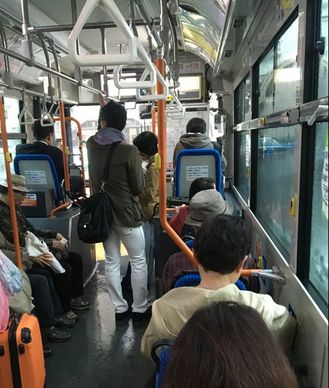
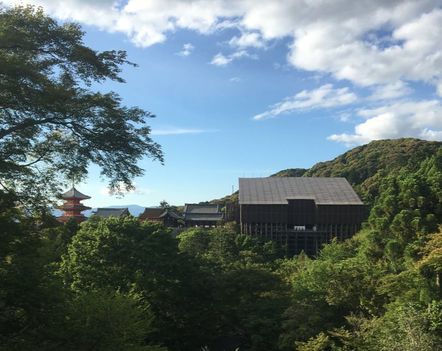
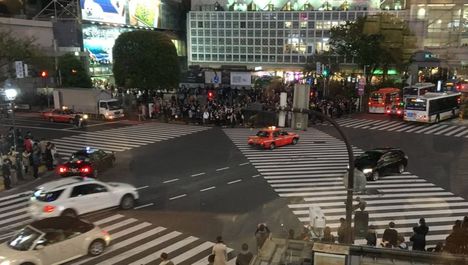
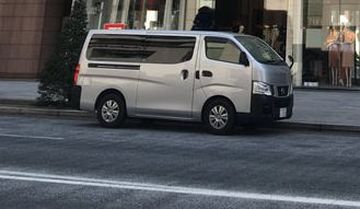

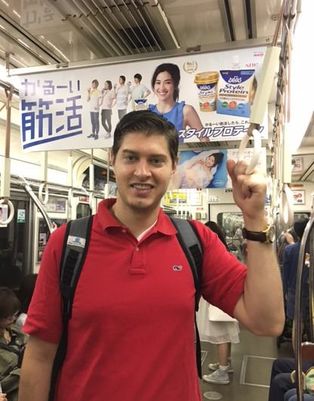
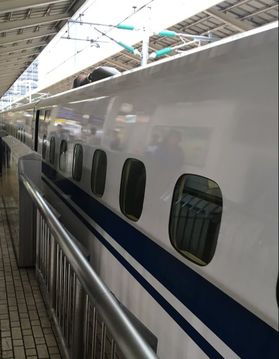
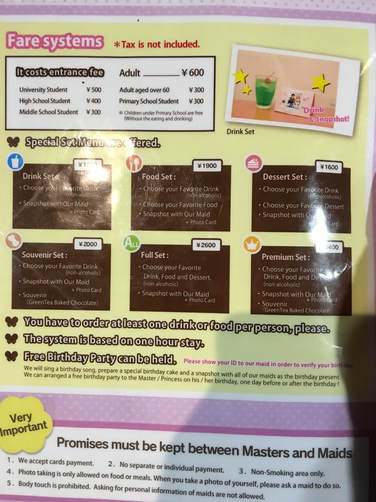
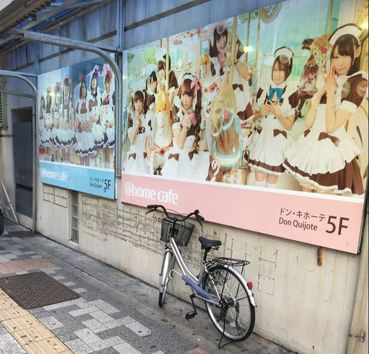
 RSS Feed
RSS Feed
